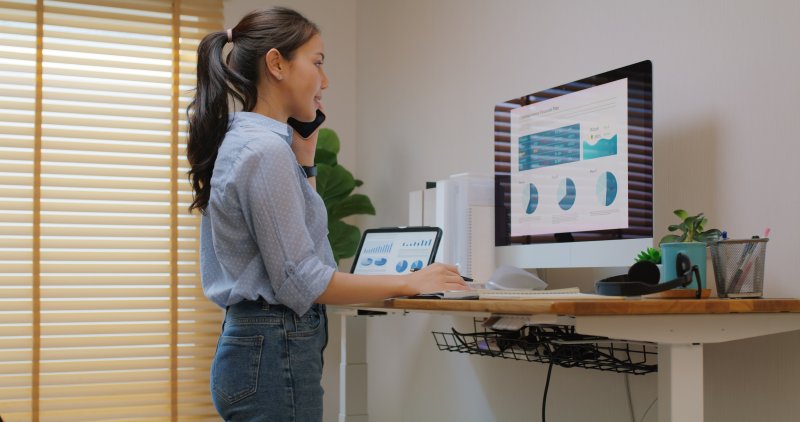5 Ergonomic Ideas to Feel Less Pain after Work
September 16, 2024

These days, it’s difficult to find a job that doesn’t involve a desk and computer, tablet, or phone, whether you have an at-home career or commute to the office. More than ever before, maintaining an ergonomic workspace is important to avoid neck and back pain, but it will also require some effort on your part. What do you need to experience less pain in the workplace? Here are some ergonomic areas to keep in check on the job.
Standing or Sitting Posture
If you are able to stand or have access to a standing desk, consider taking advantage of this ergonomic option for at least part of the day or for short spurts throughout your shift. When you sit or stand, your shoulders should be back, and your chin should be directly above your collarbone.
Chair Support
Especially when it comes to preventing lower back pain, the chair you have matters. First of all, it needs to be at the correct height for you and your desk. Your feet should be flat on the ground and your knees at a 90-degree angle as you sit, and you should have room between your legs and the bottom of the desk to allow a certain amount of movement. Your chair also needs to encourage good posture by providing lower back support and be comfortable.
Monitor Height and Distance
Sometimes, neck and back issues result from having a screen too far away to read clearly. If you hold your head forward to see your monitor, you place strain on your neck and upper back. On the other hand, if you are too close to your monitor, you can cause eyestrain or fatigue, which can give you headaches. Likewise, if your monitor is too low, your neck may hurt from looking downward for long periods of time. As a result, your screen should be at or just below eye level.
With tablets and phones, you may find yourself looking down a lot, which eventually can hurt your neck and upper back. Try to hold the tablet a little higher up to avoid this discomfort.
Keyboard and Mouse Position
At first glance, typing on a keyboard and clicking a mouse may not seem like it could lead to poor posture, but if your keyboard is too far away, your arms and shoulders are brought forward, paving the way for slouching. Also, improper positioning of the mouse and keyboard could lead to carpal tunnel syndrome, which can result in tingling, numbness, or pain in your wrist or arms. When you type, your arms should form a right angle for better circulation, posture, and nerve health.
Breaks
To give your back and your eyes relief, you should take several breaks throughout your workday. Get up and stretch or take a short walk around the office. Look out a window at things at a distance with natural lighting. Even a short break can help you reset your posture and help you feel better at the end of the day.
Ultimately, if you follow these ergonomic tips, you can get through work with less neck and back pain—whether you work at home or the office.
About the Author
At AlignRight Injury & Rehab, Dr. Zinovy Chukhman treats patients who suffer from pain as a result of various injuries. Sometimes, these injuries are sudden, such as car accidents, but sometimes these injuries are chronic and caused by daily repetitive injuries like poor posture. With more than 20 years of experience helping injured patients, Dr. Z uses many techniques, including Gonstead, flexion-distraction, and Diversified Thompson. Contact our Dallas office online or call us at 972-907-2800 to schedule an appointment.
No Comments
No comments yet.
RSS feed for comments on this post.
Sorry, the comment form is closed at this time.
